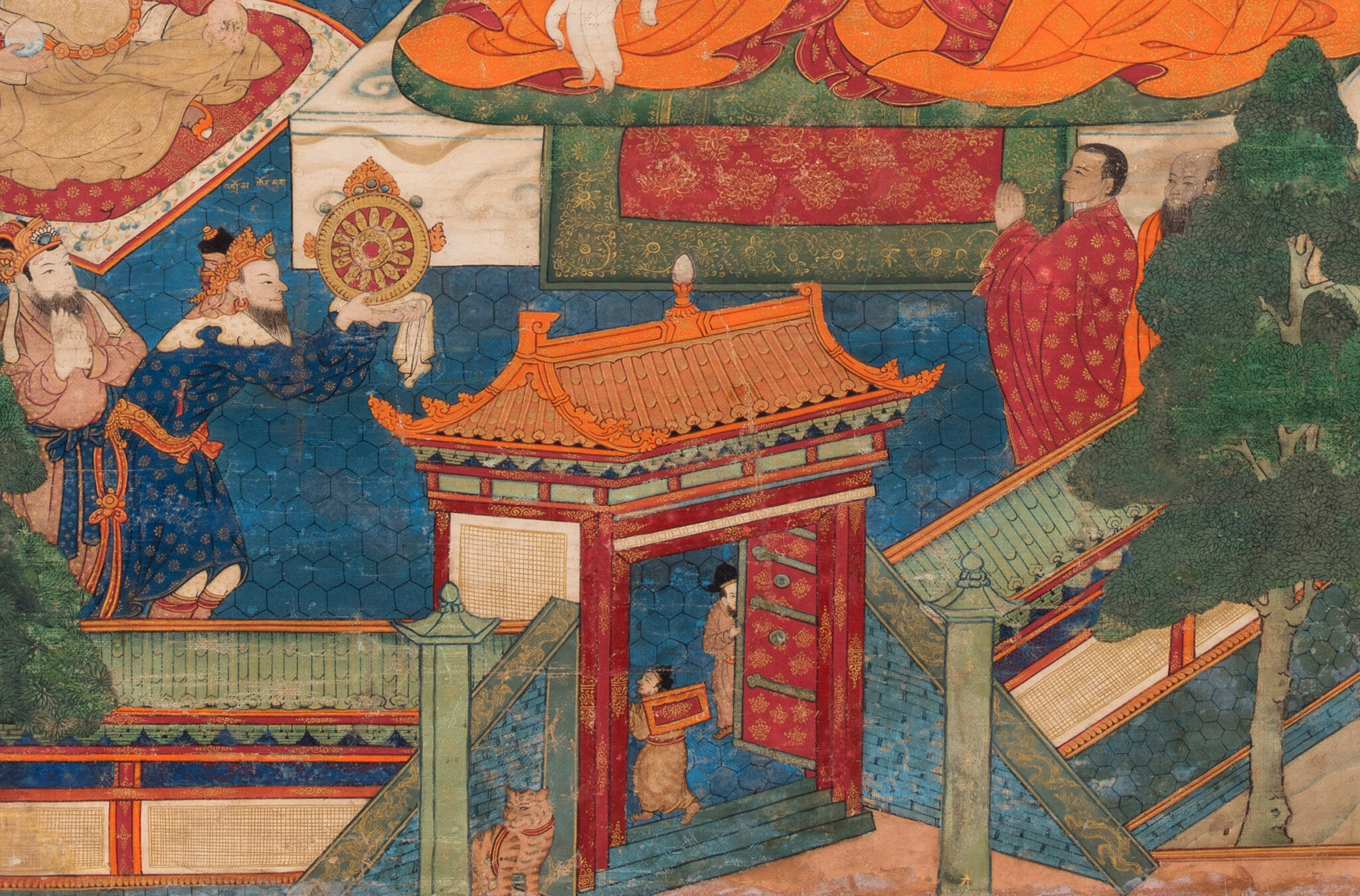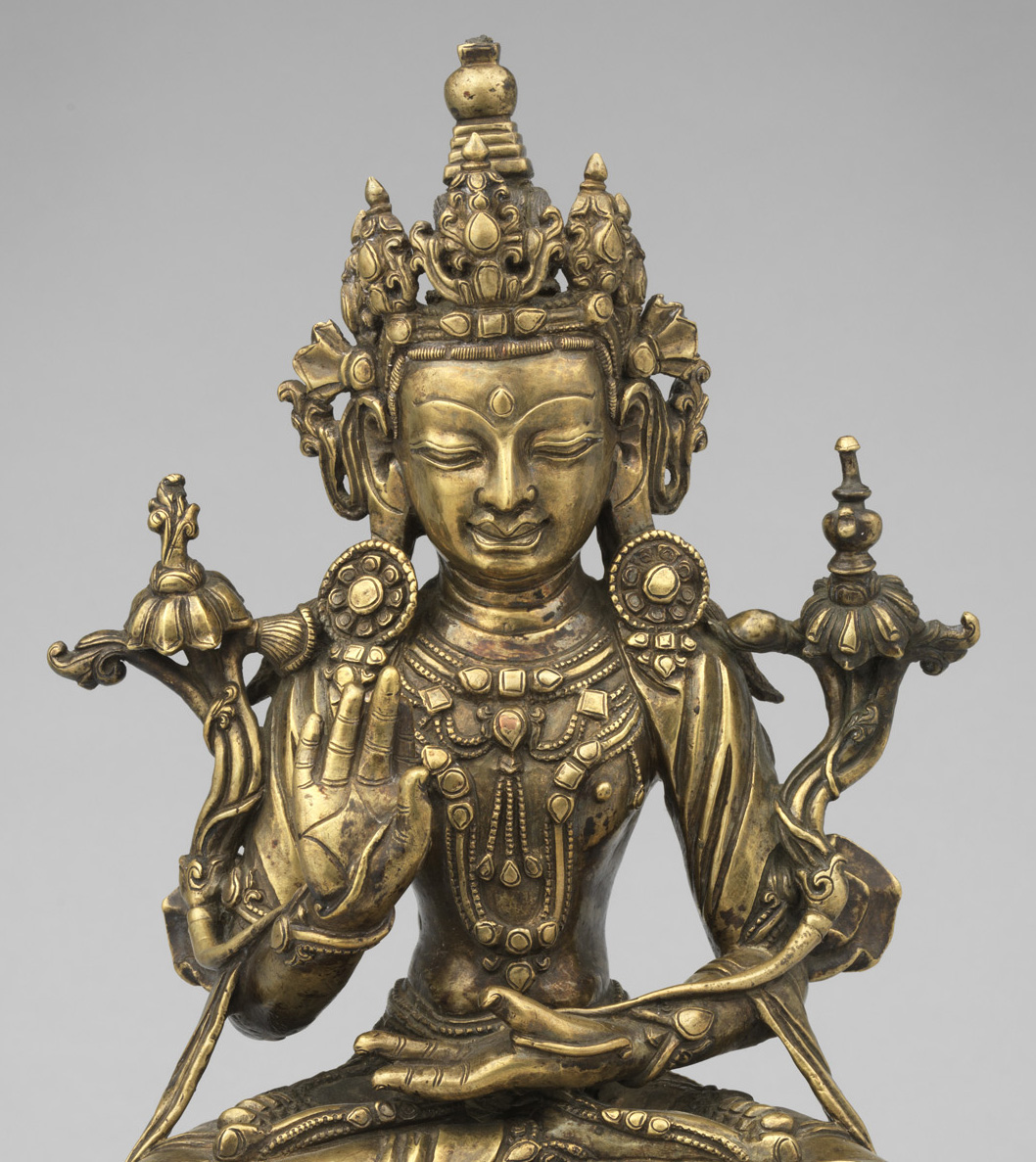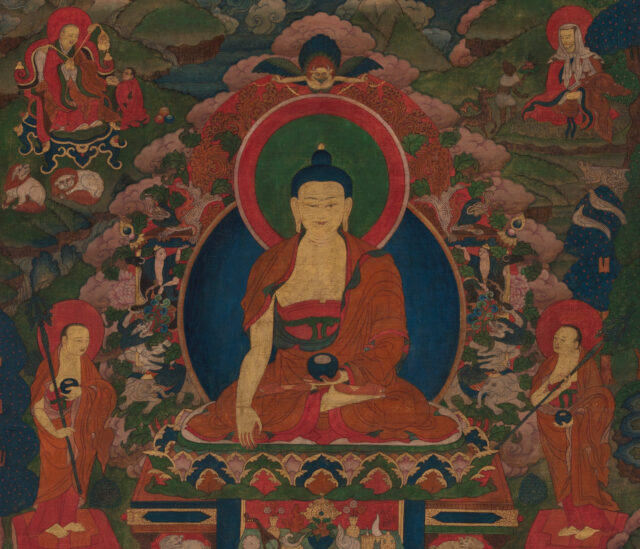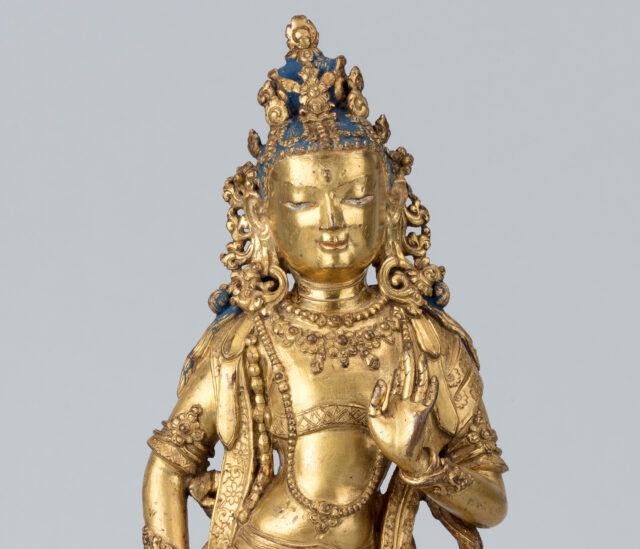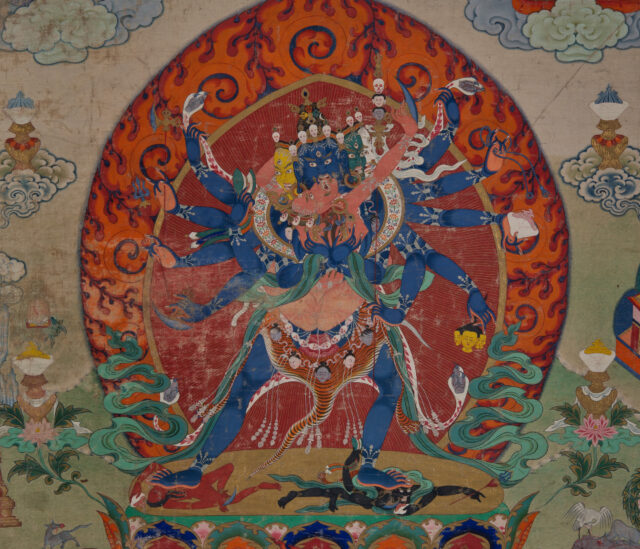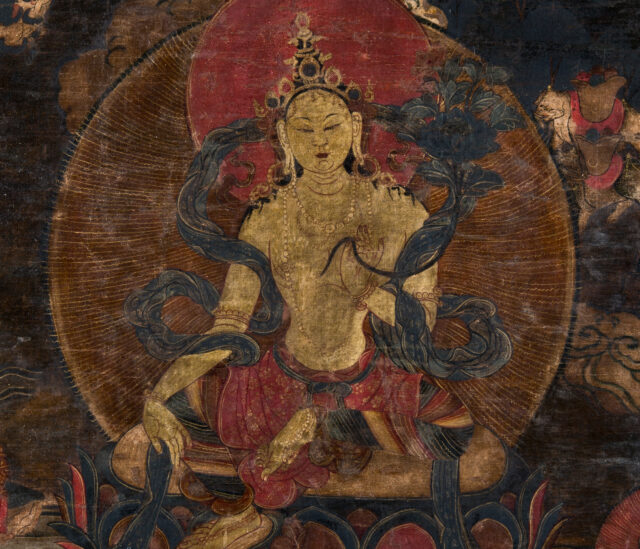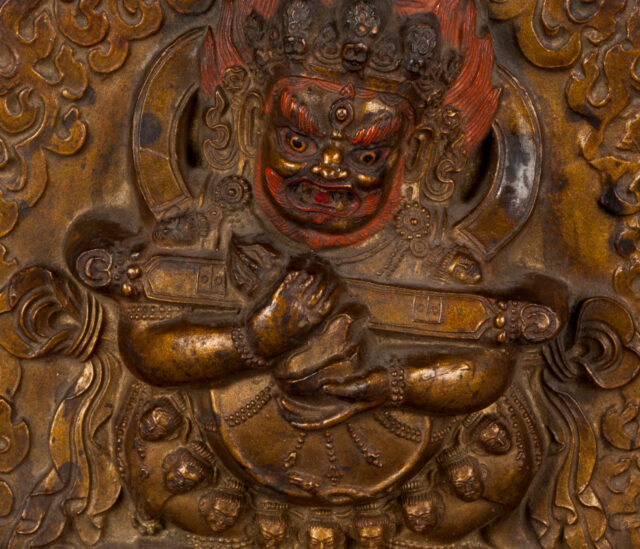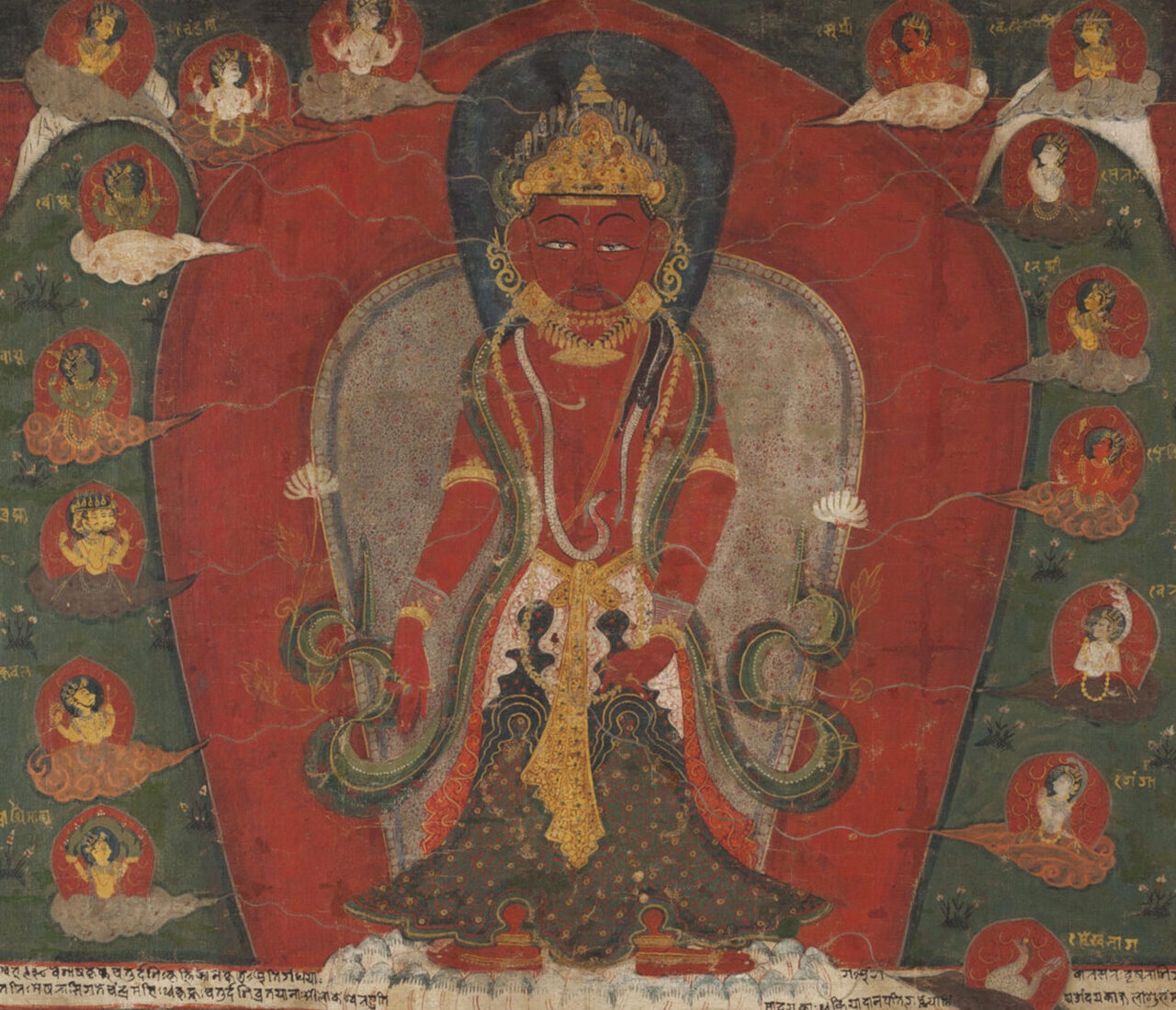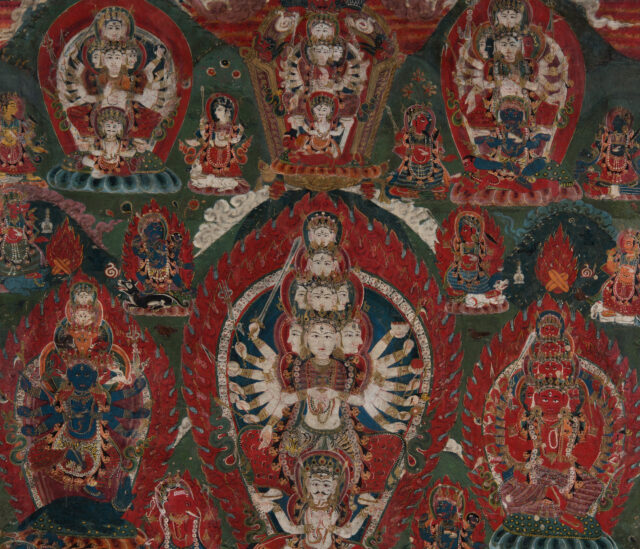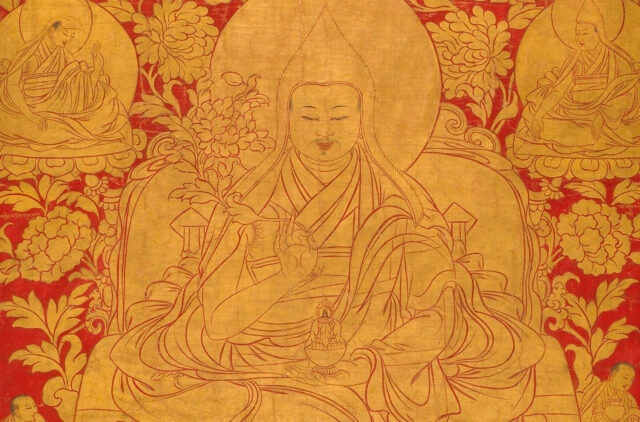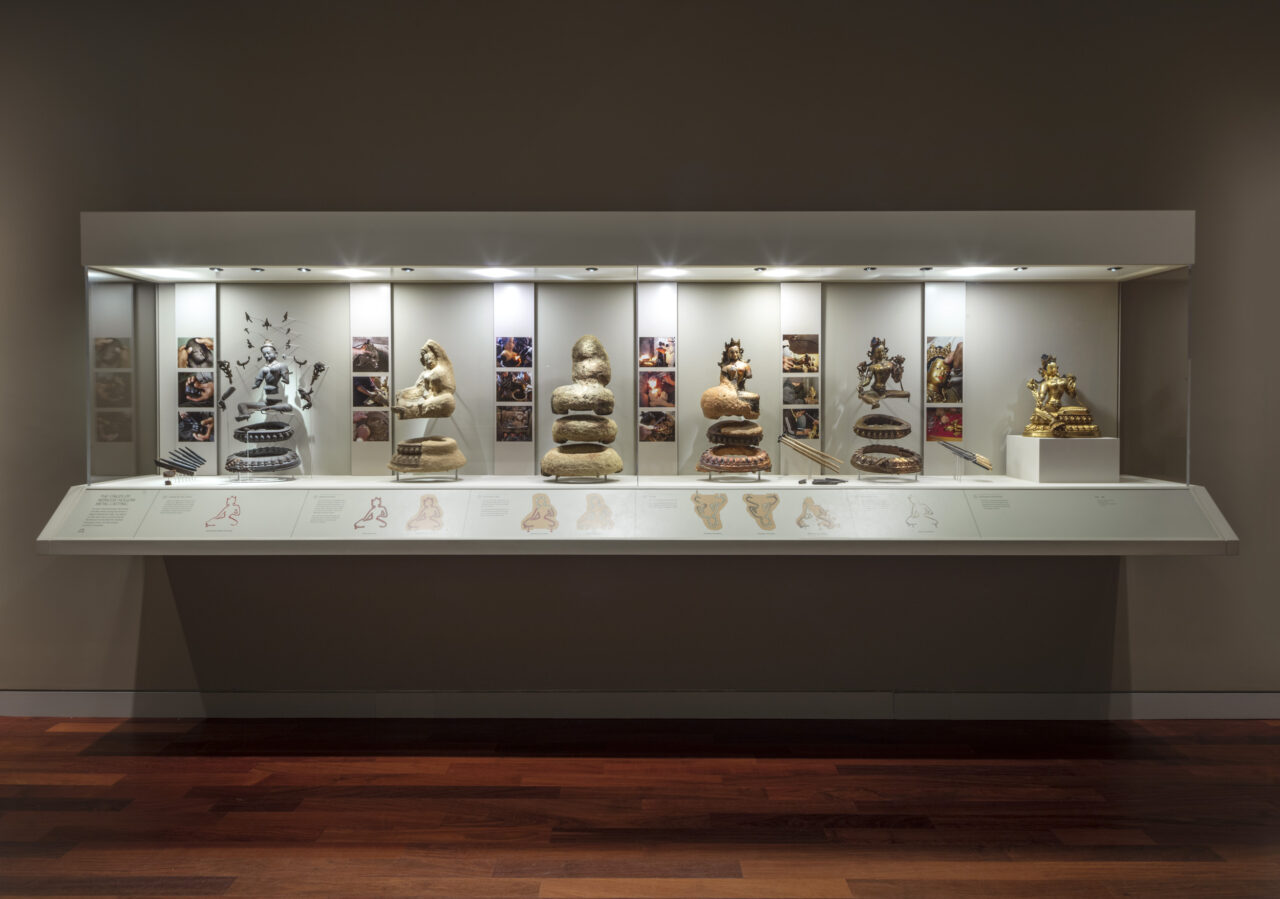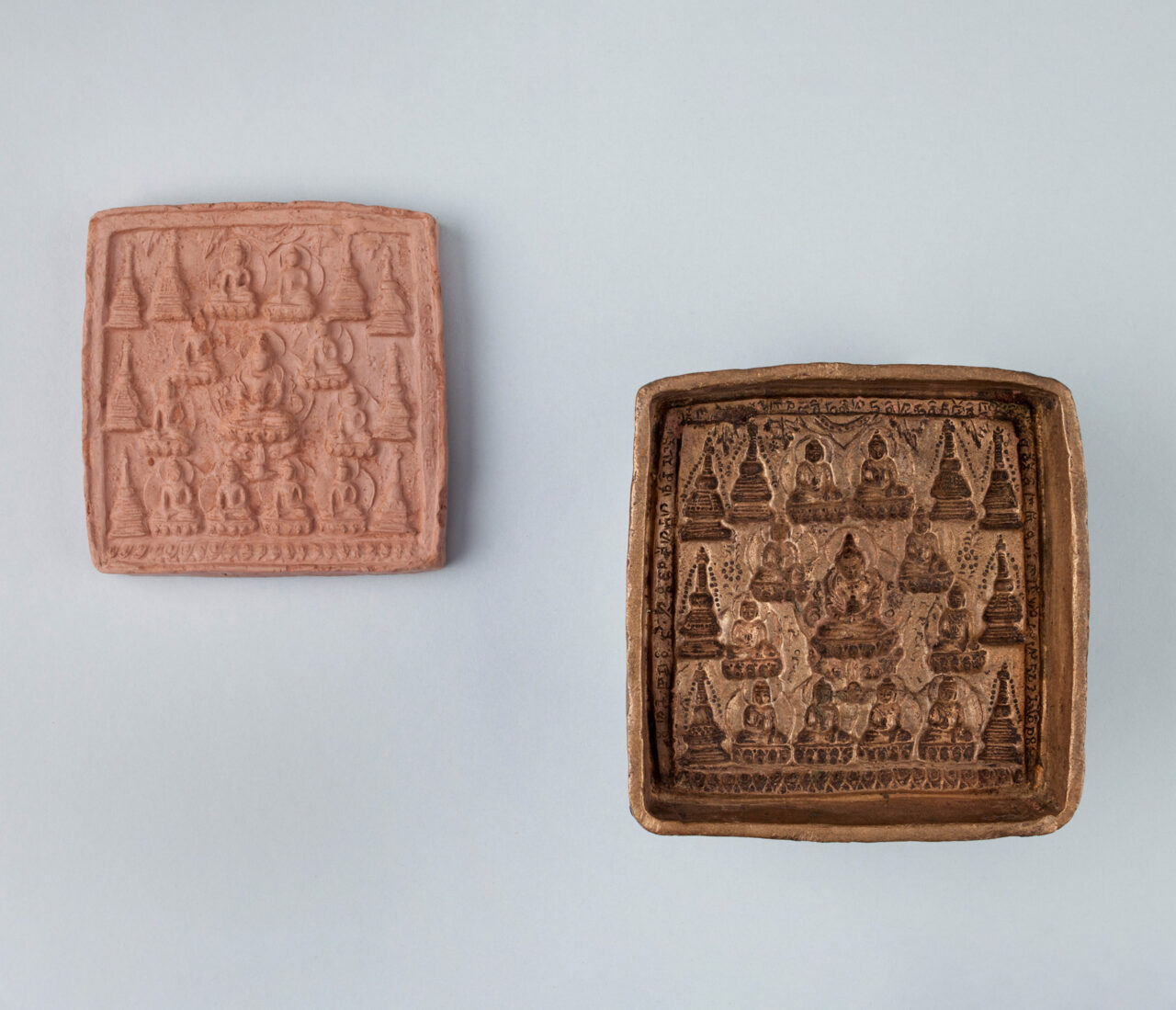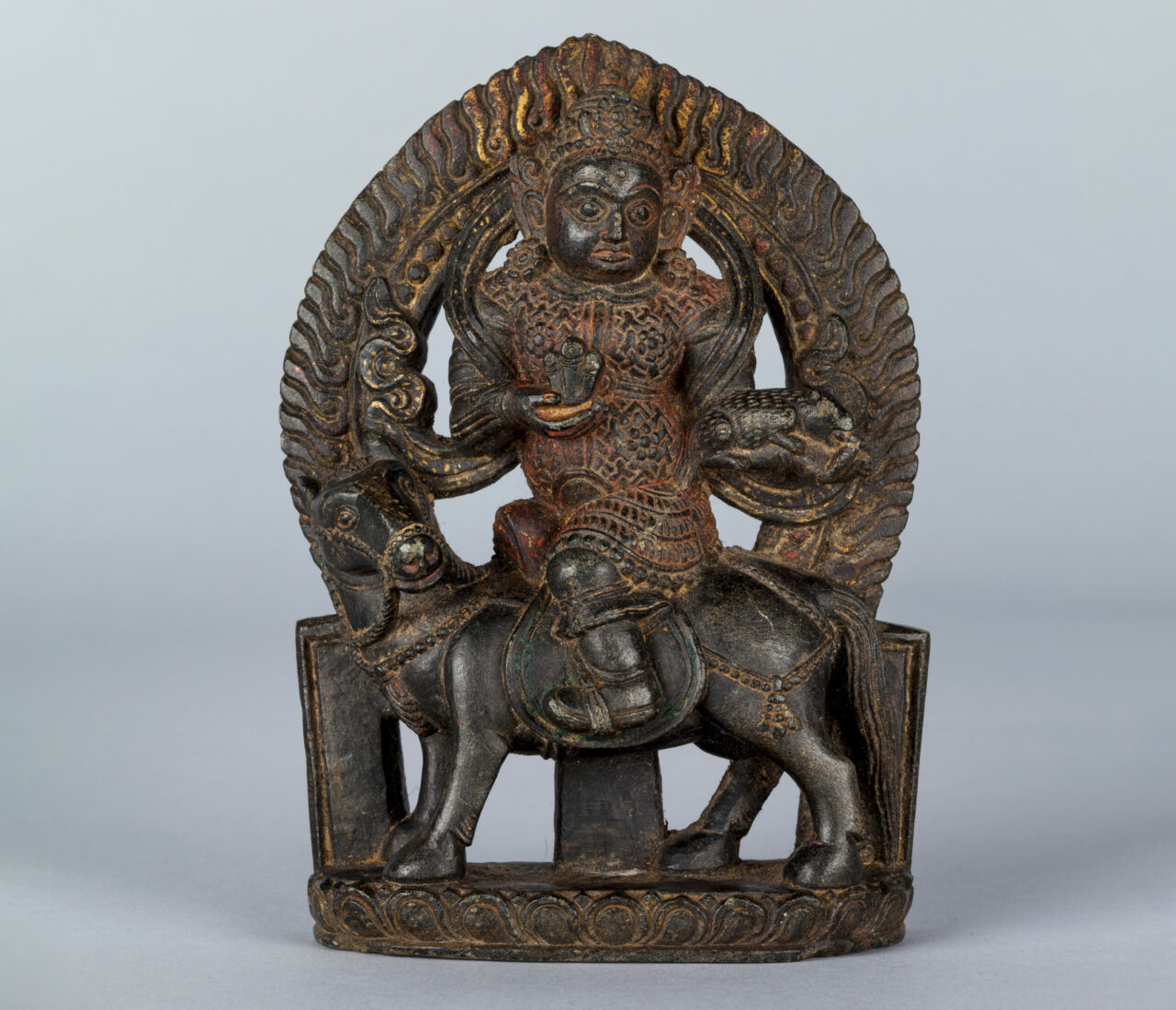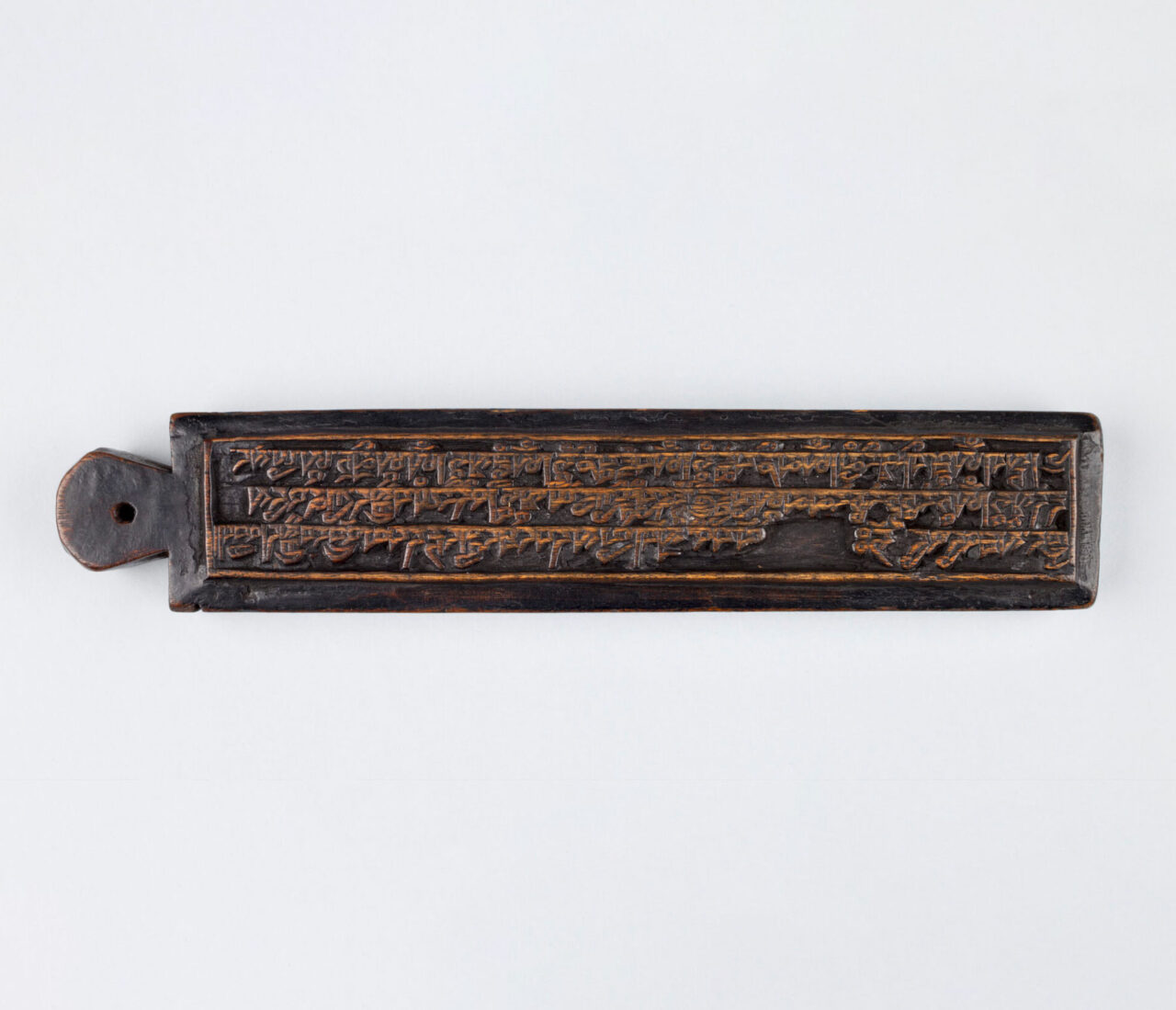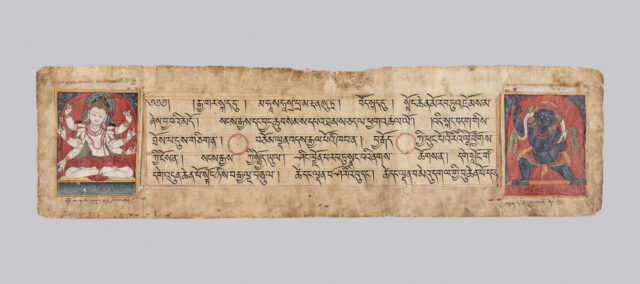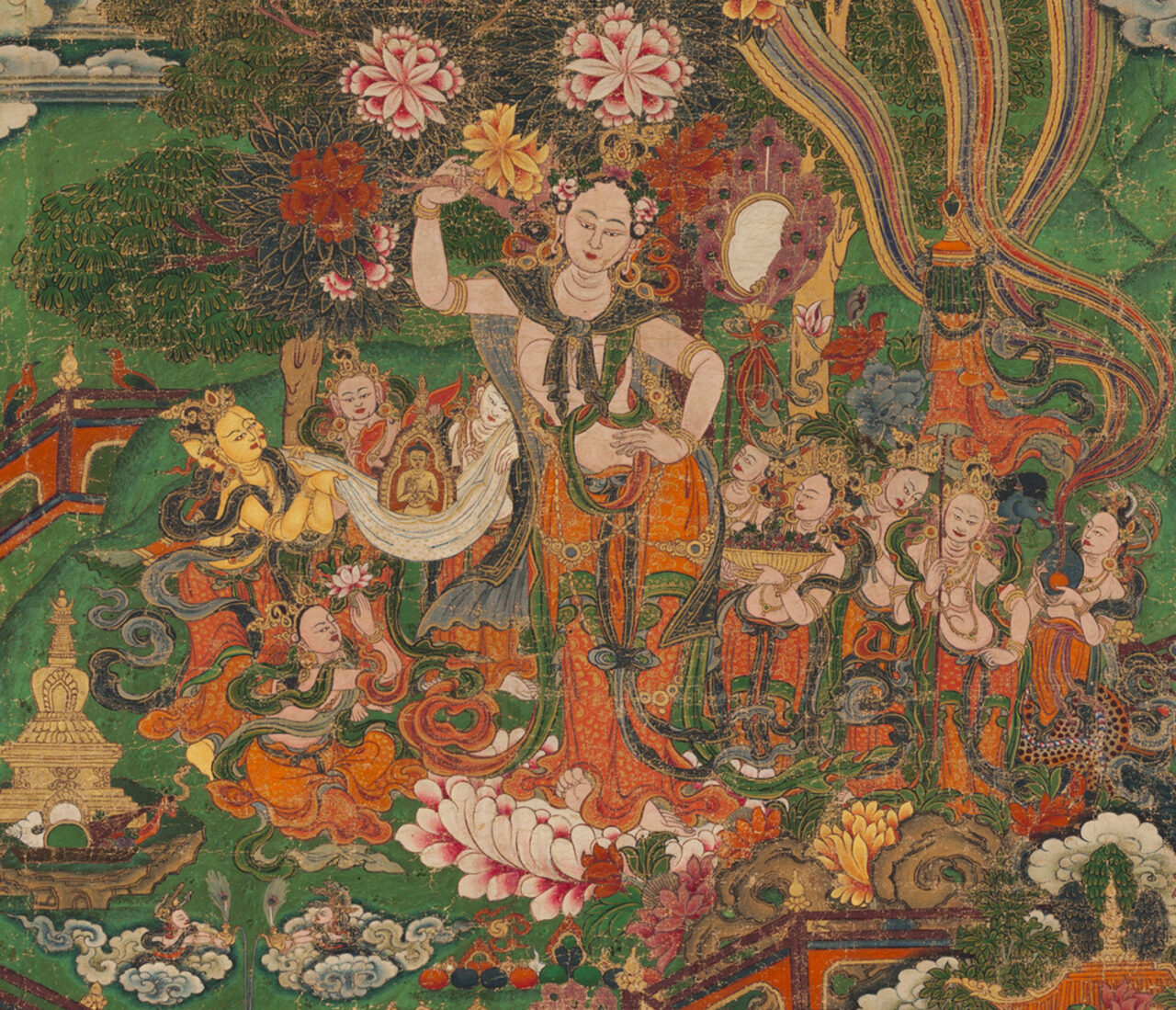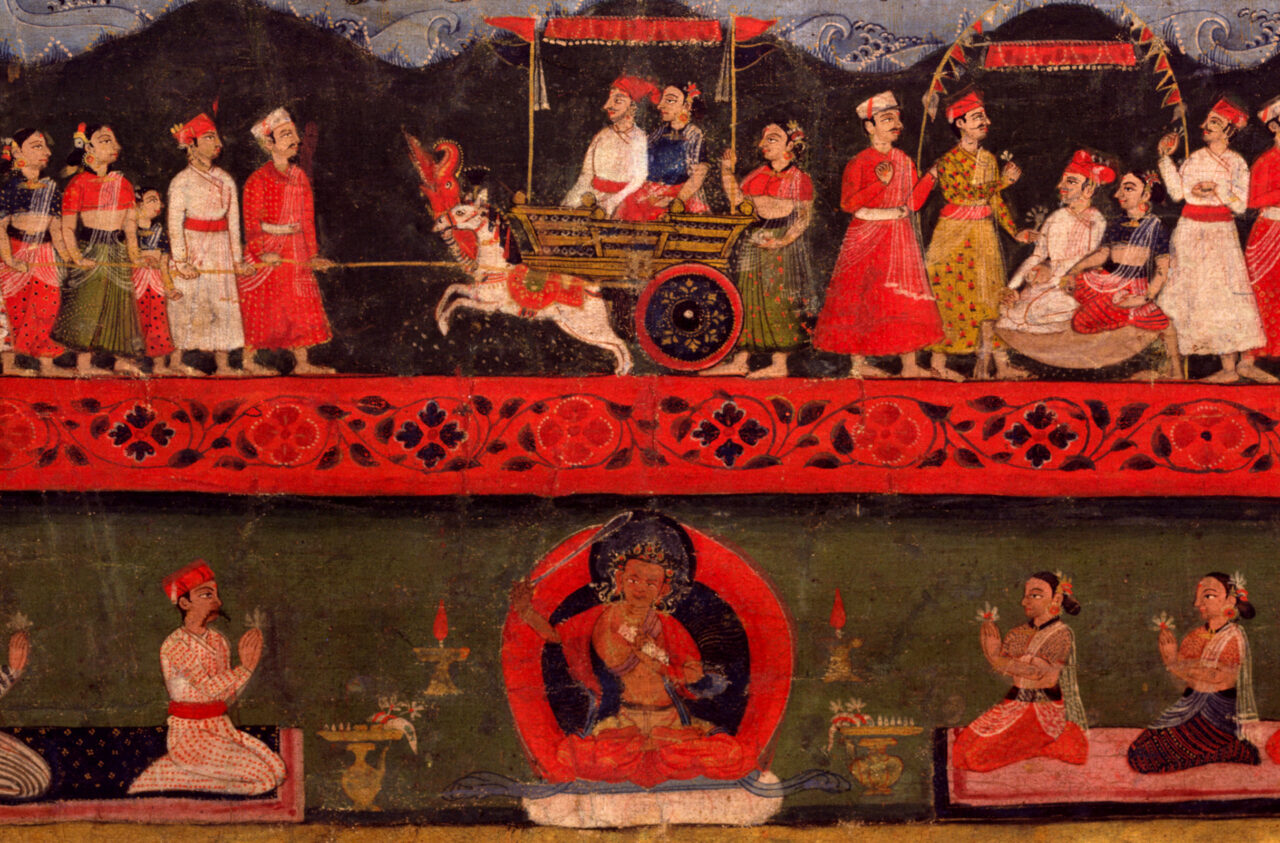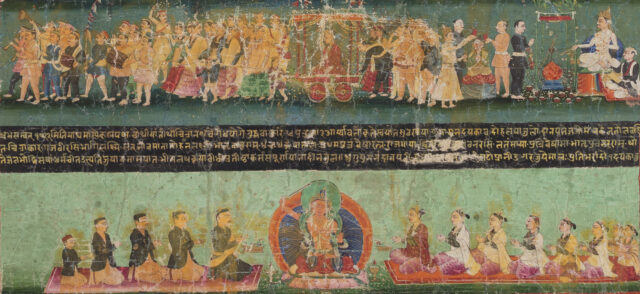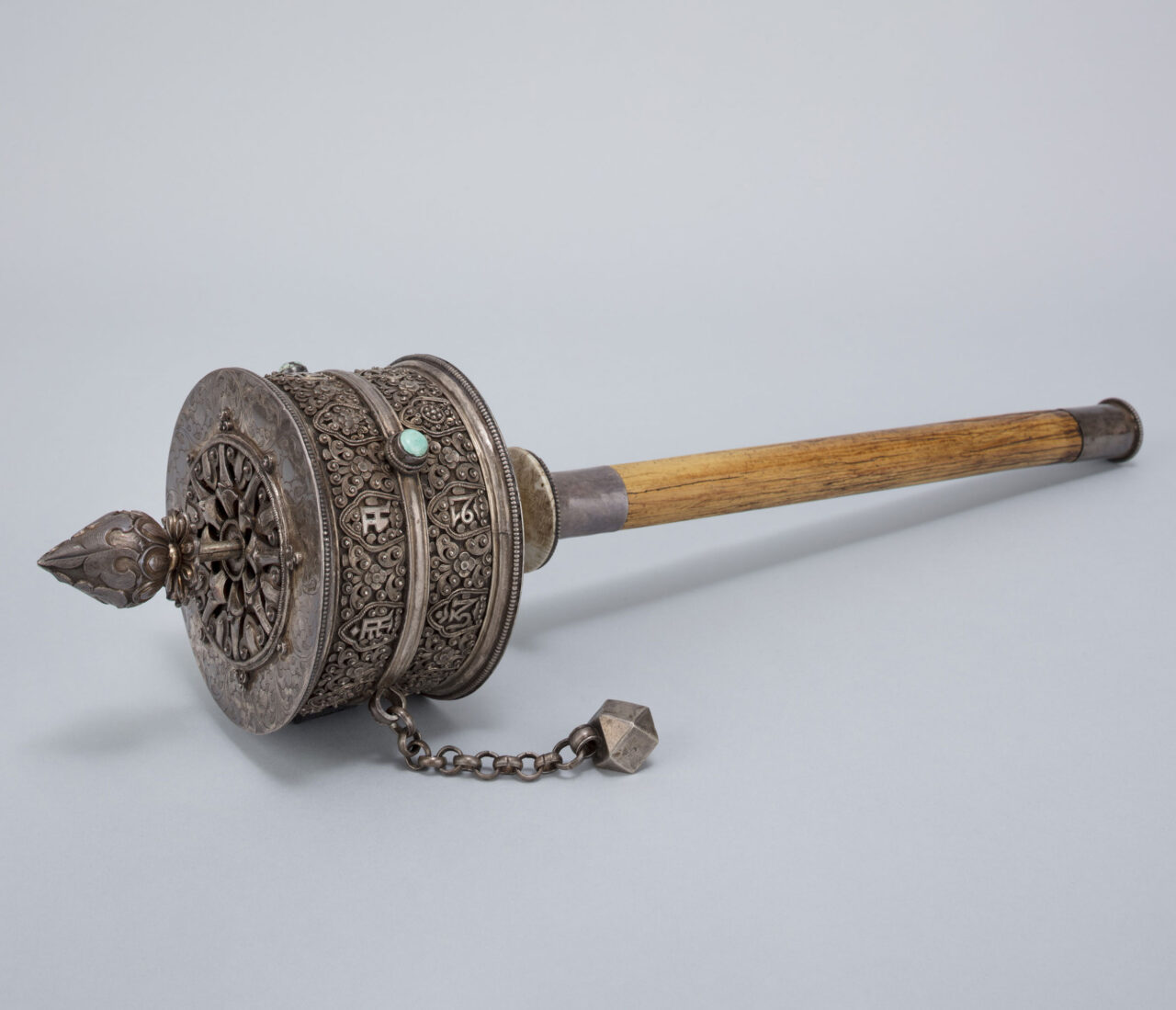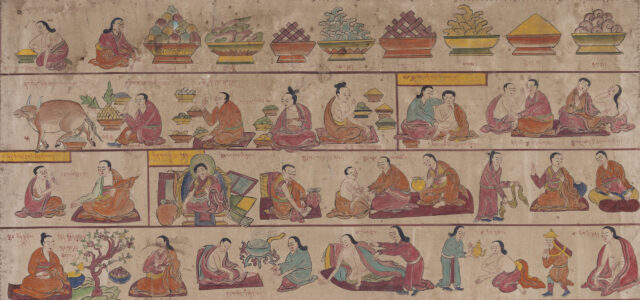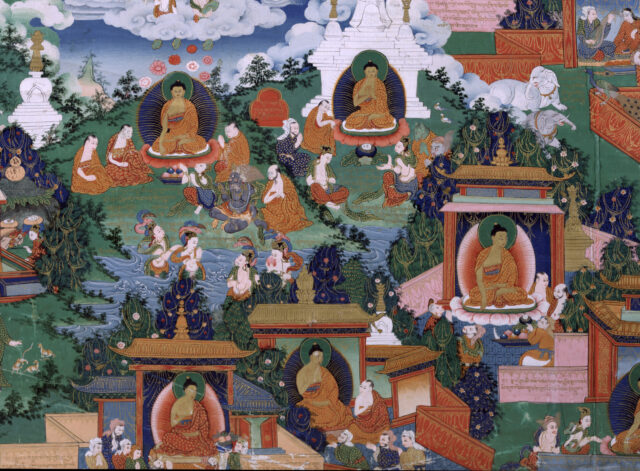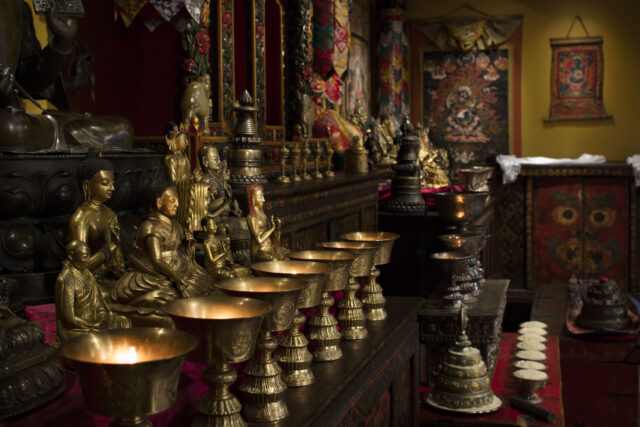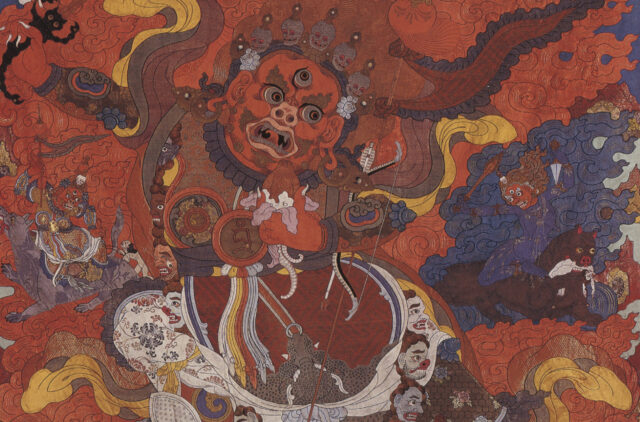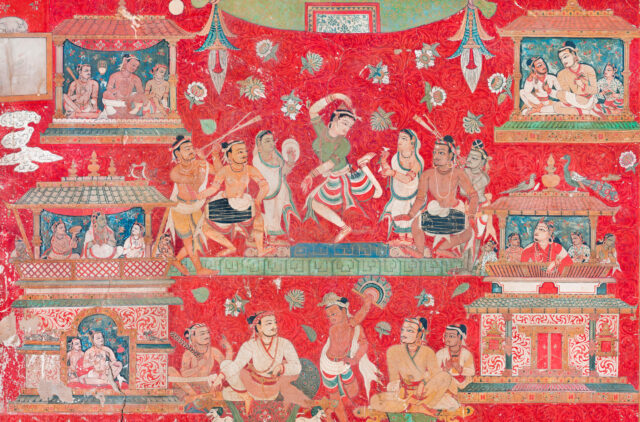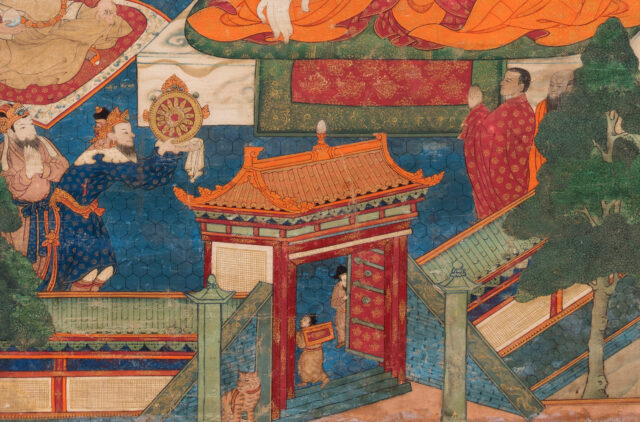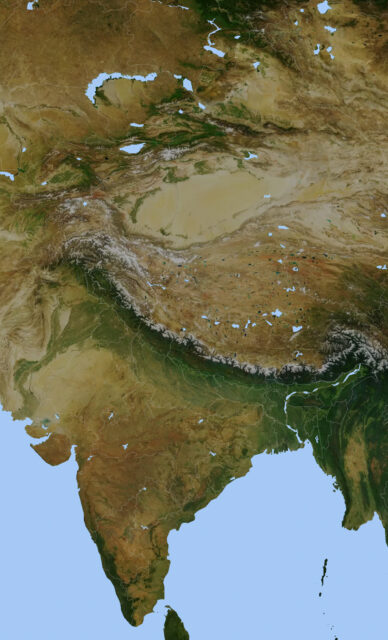Gateway to Himalayan Art introduces the main forms, concepts, meanings, and religious traditions of Himalayan art with objects from the collection of the Rubin Museum of Art, New York. A large multimedia map at the start of the exhibition orients viewers to the greater Himalayan region, which encompasses Indian, Nepalese, Bhutanese, and Tibetan cultures as well as interrelated Mongolian and Chinese traditions. Gateway invites exploration of these diverse cultural spheres through exemplary objects presented in three thematic sections: Symbols and Meanings, Materials and Technologies, and Living Practices. It also includes voices from the Himalayan community, along with connections to related digital content to learn more.
The exhibition features sculptures, Tibetan scroll paintings (thangkas), ritual implements, medical instruments, and instructional paintings, as well as a stupa and prayer wheel. In Buddhism, the commissioning, creation, and use of such objects are tied to the accumulation of merit, religious advancement, and hopes for wealth, long life, and well-being. Special installations include displays detailing the process of Nepalese lost-wax metal casting and the stages of creating a thangka painting. A Tibetan shrine cabinet presents how these objects would be displayed in a traditional household shrine.
This traveling exhibition is organized and provided by the Rubin Museum of Art and curated by Senior Curator of Himalayan Art Elena Pakhoutova. Gateway to Himalayan Art is an integral component of the Rubin Museum’s Project Himalayan Art, a three-part initiative that also includes the publication Himalayan Art in 108 Objects and this digital platform. Together they provide introductory resources for learning about and teaching Himalayan art.
The exhibition will travel to colleges and universities through 2026.
Project Himalayan Art has been made possible in part by a major grant from The National Endowment for the Humanities: Democracy demands wisdom.
